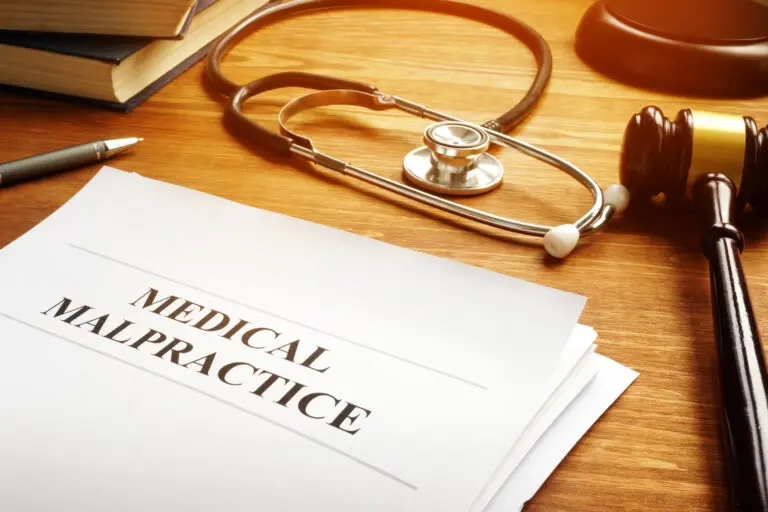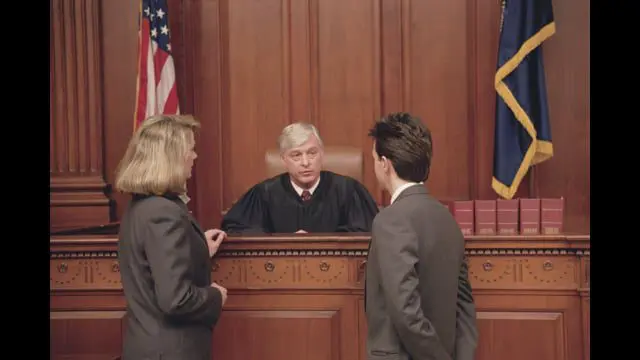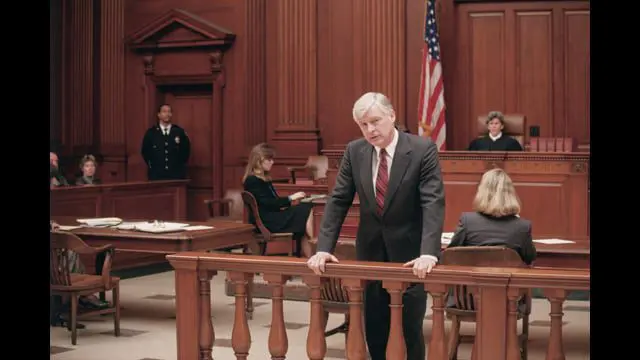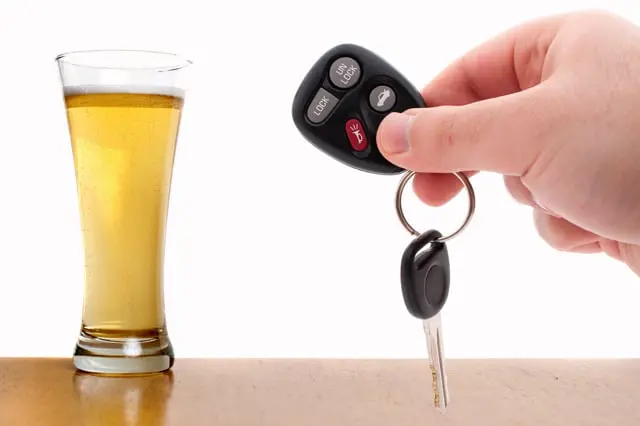En personal injury timeline is a critical aspect of any legal claim seeking compensation for harm caused by another’s negligence. Understanding the stages and expected duration of a personal injury case is essential for plaintiffs as they navigate the complex legal process. This article provides a comprehensive overview of what individuals can anticipate as their case progresses from the initial incident through potential liquidación or trial.
The journey begins immediately following an accident or injury. The first step in any reclamación por daños personales is to seek appropriate medical attention. This serves two crucial purposes: ensuring the victim’s health and well-being, and establishing an official record of injuries sustained. Medical documentation plays a pivotal role in building a strong case, as it provides concrete evidence of the harm suffered and the treatment required.
Once medical care has been initiated, the next phase involves consulting with a abogado de lesiones personales. This step is critical and should be undertaken as soon as possible after the incident. Many law firms offer free initial consultations, during which they evaluate the merits of the case and provide guidance on how to proceed. During this meeting, the attorney will gather preliminary information about the accident, injuries sustained, and potential liable parties.
If the attorney determines that the case has merit, they will typically agree to represent the client on a contingency fee basis. This arrangement means that the lawyer only receives payment if they successfully recover compensation for the client. The contingency fee structure aligns the interests of the attorney and client, incentivizing the lawyer to pursue the maximum possible recovery.
Following the retention of legal counsel, the investigation phase begins in earnest. This stage can last several weeks to several months, depending on the complexity of the case. During this time, the attorney and their team will gather evidence, interview witnesses, obtain police reports and medical records, and consult with experts if necessary. The goal is to build a comprehensive understanding of the incident and its consequences.
Concurrently with the investigation, the injured party will continue to receive medical treatment. It is crucial for the plaintiff to follow all prescribed treatments and attend all scheduled appointments. Not only does this ensure proper healing, but it also demonstrates to the insurance company and potential jurors that the injuries are genuine and significant. The duration of medical treatment varies widely depending on the nature and severity of the injuries, potentially lasting from a few weeks to several years in cases of catastrophic harm.
Once the attorney has gathered sufficient evidence and the client has reached a point of maximum medical improvement (MMI) or has a clear prognosis, the demand phase begins. The lawyer will prepare a detailed demand letter outlining the facts of the case, the injuries sustained, and the compensation sought. This document is sent to the at-fault party’s insurance company, initiating formal settlement negotiations.
The insurance company typically responds to the demand letter within 30 to 90 days. Their response may be an acceptance of the demand, a counteroffer, or a denial of liability. In most cases, this marks the beginning of a negotiation process that can extend over several weeks or months. During this time, the attorney and insurance adjuster will exchange offers and counteroffers, attempting to reach a mutually acceptable settlement.
If negotiations are successful, the case may be resolved without the need for litigation. However, if the parties cannot agree on a fair settlement, the next step is to file a demanda. It is important to note that the decision to file a lawsuit does not preclude further settlement negotiations; in fact, many cases settle after filing but before trial.
The filing of a lawsuit triggers a new set of deadlines and procedures governed by the court’s rules. The defendant must be formally served with the complaint and summons, after which they have a specified period (usually 20 to 30 days) to file an answer. This marks the beginning of the litigation phase, which can significantly extend the timeline of a personal injury case.
Once the defendant has answered the complaint, the discovery phase commences. Discovery is a formal process through which both parties exchange information relevant to the case. This includes written interrogatories (questions that must be answered under oath), requests for production of documents, and depositions (oral testimony given under oath). The discovery phase is often the longest part of the litigation process, typically lasting several months to a year or more in complex cases.
During discovery, both sides have the opportunity to learn about the strengths and weaknesses of the other’s case. This information often leads to renewed settlement negotiations, as each party reassesses the risks of proceeding to trial. Many cases settle during or shortly after the discovery phase as the full picture of evidence becomes clear.
If the case does not settle, the next step is usually mediation or arbitration. These are forms of resolución alternativa de litigios (ADR) that aim to resolve the case without a trial. Mediation involves a neutral third party who facilitates negotiations between the parties. Arbitration is a more formal process where an arbitrator hears evidence and makes a decision, which may or may not be binding depending on the agreement of the parties.
Should ADR efforts fail, the case proceeds to trial. The trial phase requires extensive preparation by both sides. Attorneys will select jury members, prepare opening and closing statements, organize evidence, and prepare witnesses to testify. The trial itself may last anywhere from a few days to several weeks, depending on the complexity of the case and the number of witnesses.
At trial, both sides present their evidence and arguments to the judge or jury. After all evidence has been presented and closing arguments made, the judge or jury deliberates and renders a verdict. If the plaintiff prevails, the judge will enter a judgment specifying the amount of damages to be paid.
It is important to note that the conclusion of the trial does not necessarily mark the end of the case. Either party may choose to appeal the verdict, which can add months or even years to the process. During the appeal, the losing party asks a higher court to review the trial court’s decision for legal errors. If significant errors are found, the case may be sent back for a new trial or the verdict may be modified or overturned.
Throughout this entire process, from the initial injury to the final resolution, the personal injury timeline can vary widely. Simple cases with clear liability and moderate injuries may be resolved in a matter of months through settlement negotiations. More complex cases, particularly those involving severe injuries, disputed liability, or multiple parties, can take several years to reach a conclusion, especially if they proceed through trial and appeals.
Several factors can influence the duration of a personal injury case. The severity and complexity of the injuries play a significant role. Cases involving long-term or permanent disabilities often take longer to resolve as the full extent of future medical needs and lost earning capacity must be determined. The clarity of liability is another crucial factor. Cases where fault is disputed or shared among multiple parties typically require more time for investigation and negotiation.
The jurisdiction in which the case is filed can also affect the timeline. Some court systems are more congested than others, leading to longer wait times for trial dates. Additionally, the specific judge assigned to the case may have their own scheduling preferences and caseload that impact the pace of proceedings.
The behavior of the parties involved can significantly influence the duration of a case. If the defendant or their insurance company is willing to negotiate in good faith, a settlement may be reached relatively quickly. Conversely, if they adopt a strategy of delay or denial, the process can be prolonged. Similarly, the plaintiff’s willingness to accept a reasonable settlement offer versus holding out for a potentially larger award at trial can affect the timeline.
One aspect of personal injury cases that has gained increasing attention in recent years is the role of mental health claims. While physical injuries are often more readily apparent and quantifiable, the psychological impact of an accident or injury can be equally devastating. Courts and insurance companies have begun to give greater weight to claims for emotional distress, anxiety, depression, and post-traumatic stress disorder (PTSD) resulting from personal injury incidents.
Incorporating mental health aspects into a personal injury claim can add complexity to the case timeline. It often requires expert testimony from mental health professionals to establish the extent and duration of psychological harm. Additionally, because the effects of mental health injuries may not be immediately apparent or may evolve over time, it can take longer to reach a point where the full impact can be assessed and quantified for the purposes of settlement or trial.
Another trend affecting personal injury timelines is the increasing use of technology in evidence gathering and case presentation. Technological evidence such as dashcam footage, surveillance video, and data from vehicle “black boxes” can provide crucial information about the circumstances of an accident. While this type of evidence can strengthen a case, collecting and analyzing it may extend the investigation phase.
Similarly, the use of advanced medical imaging and diagnostic tools can provide more detailed information about injuries but may also require more time to complete and interpret. In complex cases, attorneys may employ accident reconstruction experts who use sophisticated software to create 3D models or simulations of the incident. While these tools can be powerful in demonstrating liability or the mechanism of injury, they also add time to the case preparation process.
The rise of social media has introduced new considerations in personal injury cases. Insurance companies and defense attorneys often scrutinize plaintiffs’ social media accounts for evidence that might contradict their claims about the extent of their injuries or their post-accident activities. This has made it increasingly important for plaintiffs to be cautious about their online presence during the pendency of their case, potentially extending the timeline as attorneys advise clients on managing their digital footprint.
An emerging factor that may impact personal injury timelines in the coming years is the integration of artificial intelligence (AI) in legal practice. AI tools are being developed to assist with document review, case law research, and even predictive analysis of case outcomes. While these technologies have the potential to streamline certain aspects of case preparation, their implementation and the learning curve associated with new systems may initially extend timelines as law firms adapt.
The COVID-19 pandemic has also left a lasting impact on personal injury case timelines. Court closures and backlogs created during the height of the pandemic continue to affect scheduling in many jurisdictions. Additionally, the shift towards remote depositions, mediations, and even trials in some cases has introduced new procedural considerations that can affect case timelines.
One area of personal injury law that often involves extended timelines is mass tort litigation. These cases, which involve multiple plaintiffs suing one or a few defendants over similar injuries (often related to defective products or pharmaceutical drugs), can take many years to resolve. The complexity of coordinating numerous claims, conducting extensive scientific research, and managing large-scale discovery processes contributes to the lengthy duration of these cases.
Mass tort cases often proceed through a process called multidistrict litigation (MDL), where similar cases from around the country are consolidated before a single federal judge for pretrial proceedings. This consolidation can streamline certain aspects of the litigation, but the sheer scale of these cases means that resolution often takes years. In some instances, bellwether trials are conducted to test the strength of the claims and guide settlement negotiations for the larger group of plaintiffs.
Another factor that can extend the timeline of personal injury cases is the involvement of government entities as defendants. Claims against government agencies or employees often involve additional procedural requirements, such as notice provisions and shorter statutes of limitations. Moreover, government entities may have different approaches to settlement negotiations and may be more inclined to litigate cases fully, potentially extending the timeline.
El concepto de negligencia comparativa can also complicate personal injury timelines. In jurisdictions that follow comparative negligence principles, the plaintiff’s recovery may be reduced by their percentage of fault in causing the accident. Determining these percentages often requires more extensive investigation and negotiation, potentially prolonging the settlement process or necessitating a trial to resolve disputes over the allocation of fault.
An important consideration in personal injury timelines is the prescripción. This legal deadline for filing a lawsuit varies by state and type of claim, typically ranging from one to six years from the date of injury. While the statute of limitations sets an outer bound for initiating legal action, it’s generally advisable to begin the process much sooner. Waiting until near the deadline can compress the timeline for investigation and negotiation, potentially forcing a lawsuit to be filed before thorough case preparation can be completed.
The personal injury timeline can also be affected by the type of accident involved. For example, accidente de tráfico cases may proceed more quickly than negligencia médica cases, which often require extensive expert review and testimony. Slip and fall cases may have timelines that fall somewhere in between, depending on the clarity of liability and the extent of injuries.
Workers’ compensation cases, while not strictly personal injury claims in the traditional sense, often intersect with personal injury law when third-party liability is involved. These hybrid cases can have complex timelines as they navigate both the workers’ compensation system and civil litigation processes.
The financial circumstances of the parties involved can also impact case timelines. If the defendant has limited insurance coverage or assets, it may expedite settlement discussions as the plaintiff’s attorney seeks to secure the maximum available compensation quickly. Conversely, cases involving defendants with substantial resources may be more protracted as the stakes for both sides are higher.
An emerging trend in personal injury law is the increasing focus on planificación de cuidados a largo plazo for severely injured plaintiffs. This involves not only calculating immediate medical expenses and lost wages but also projecting future care needs, potential medical advancements, and long-term financial management. Developing comprehensive life care plans often requires input from medical experts, economists, and financial planners, which can extend the case preparation phase but ultimately leads to more comprehensive settlements or verdicts.
El papel de expert witnesses in personal injury cases cannot be overstated, and their involvement can significantly impact case timelines. Depending on the nature of the case, experts in fields such as accident reconstruction, biomechanics, economics, or various medical specialties may be required. Coordinating expert investigations, reports, and testimony can add months to the case timeline, especially if multiple experts are needed or if their findings are contested by the opposing side.
Another factor that can influence personal injury timelines is the cobertura del seguro involved. Cases with clear liability and policy limits that are inadequate to cover the full extent of damages may resolve relatively quickly. However, cases involving multiple insurance policies, such as those with umbrella coverage or cases involving commercial vehicles, may take longer to resolve as the various insurers coordinate their responses and potentially dispute their respective responsibilities.
The personal injury timeline can also be affected by changes in law or legal precedent during the pendency of a case. Significant court decisions or new legislation can alter the legal landscape, potentially requiring reassessment of case strategy or value. While relatively rare, such changes can introduce delays as attorneys analyze their impact and potentially adjust their approach to the case.
In conclusion, the personal injury timeline is a complex and variable process influenced by numerous factors. While some cases may resolve in a matter of months, others can extend for years, particularly if they proceed to trial and appeal. Understanding the potential duration and stages of a personal injury case is crucial for plaintiffs as they navigate the legal system and work towards fair compensation for their injuries. By maintaining open communication with their attorney and actively participating in the process, injured parties can help ensure their case progresses as efficiently as possible while still pursuing the full measure of justice they deserve.
- https://garmeylaw.com/blog/7-stages-personal-injury-lawsuit-timeline/
- https://www.brownandcrouppen.com/blog/how-long-does-a-lawsuit-take-to-settle/
- https://www.onthemap.com/blog/personal-injury-keywords/
- https://www.thefafirm.com/blog/personal-injury-lawsuit-timelines/
- https://www.fdslaw.com/blog/personal-injury/personal-injury-settlement-check-process/
- https://www.nolo.com/legal-encyclopedia/timeline-personal-injury-lawsuit.html
- https://www.findlaw.com/injury/accident-injury-law/personal-injury-law-the-basics.html
- https://www.lawinfo.com/resources/personal-injury/the-stages-of-personal-injury-lawsuit.html
- https://www.alllaw.com/articles/nolo/personal-injury/steps-lawsuit.html
- https://selfhelp.courts.ca.gov/civil-lawsuit/personal-injury









